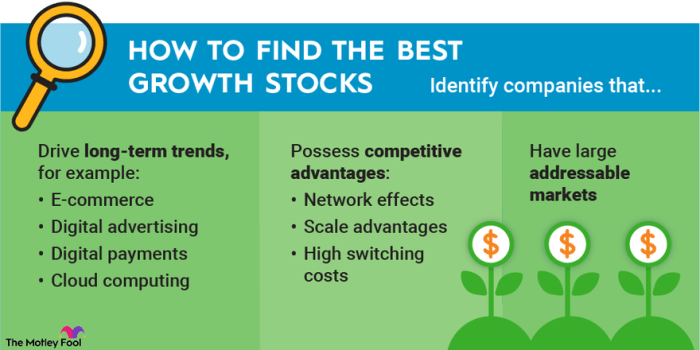
Exploring the realm of Best Investments for Capital Growth, this introduction sets the stage for an in-depth look at strategies to enhance your capital growth potential.
Providing insights into different investment options and risk management techniques, this overview aims to equip you with the knowledge needed to make informed investment decisions.
Capital Allocation
Capital allocation is a crucial aspect of investment strategies that involves distributing funds across different assets to achieve a balance between risk and return.
Importance of Diversification
Diversification plays a key role in capital allocation for growth as it helps spread risk across various investments, reducing the impact of a potential loss on the overall portfolio.
“Don’t put all your eggs in one basket.”
- Diversifying your capital across asset classes, industries, and geographies can help mitigate the impact of market volatility and specific risks associated with individual investments.
- By allocating capital to a mix of assets with low correlation, investors can potentially enhance returns while lowering overall portfolio risk.
Risk Tolerance and Capital Allocation
Understanding your risk tolerance is essential when making decisions on capital allocation for growth.
“Higher risk often comes with the potential for higher returns, but it also increases the likelihood of losses.”
- Investors with a higher risk tolerance may allocate a larger portion of their capital to growth-oriented assets such as stocks or emerging markets.
- On the other hand, conservative investors might opt for a more balanced approach, allocating capital to a mix of equities, bonds, and other fixed-income securities.
Types of Investments
Investing for capital growth involves considering various types of investments that can help grow your wealth over time. Let’s explore some common options and their roles in achieving capital growth.
Stocks
- Stocks represent ownership in a company and can offer significant potential for capital growth through price appreciation and dividends.
- Investing in individual stocks requires research and monitoring to make informed decisions.
- Stocks are considered higher risk but have the potential for higher returns compared to other investment options.
Bonds
- Bonds are debt securities issued by governments or corporations, offering fixed interest payments over a specified period.
- While bonds generally offer lower returns than stocks, they are considered less volatile and provide income stability.
- Bonds can be part of a diversified investment portfolio to reduce overall risk.
Real Estate
- Investing in real estate can provide capital growth through property appreciation and rental income.
- Real estate investments can offer diversification and act as a hedge against inflation.
- Real estate requires active management but can be a valuable long-term investment strategy.
Alternative Investments
- Alternative investments like private equity, hedge funds, and venture capital offer opportunities for capital growth outside traditional asset classes.
- These investments often have higher minimum investment requirements and are less liquid than stocks or bonds.
- Alternative investments can provide diversification and access to unique investment opportunities for investors seeking higher returns.
Risk Management
When aiming for capital growth, it is crucial to implement effective risk management strategies to protect your investments and maximize returns.
Relationship between Risk and Return
The relationship between risk and return is a fundamental concept in investing. Typically, higher returns are associated with higher levels of risk. Investors must carefully assess their risk tolerance and investment goals to find a balance between risk and potential returns.
Diversification to Reduce Risk
Diversification is a key strategy for reducing risk in a capital growth portfolio. By spreading investments across different asset classes, industries, and geographical regions, investors can minimize the impact of any single investment underperforming. This helps to smooth out fluctuations in the portfolio’s overall value.
Market Analysis

Market analysis plays a crucial role in identifying the best investments for capital growth. By examining market trends, economic conditions, and other relevant factors, investors can make informed decisions to maximize their returns.
Key Indicators for Market Analysis
- Supply and demand dynamics: Understanding the balance between supply and demand for a particular asset class can provide insights into potential price movements.
- Interest rates: Changes in interest rates can impact the cost of borrowing and influence investment decisions across various asset classes.
- Inflation rates: Inflation erodes the purchasing power of money, affecting the real returns on investments.
- Market sentiment: Investor sentiment and market psychology can drive asset prices, creating opportunities for profit or loss.
Impact of Economic Factors on Asset Classes
-
Interest rates:
Higher interest rates can lead to lower valuations for fixed-income securities, while benefiting sectors like banking.
-
Inflation:
Assets like real estate and commodities tend to perform well in inflationary environments, offering a hedge against rising prices.
-
Economic growth:
Strong economic growth can drive corporate profits and boost equity markets, while economic downturns may lead to declines in stock prices.
Time Horizon

Investing with a clear time horizon is crucial when aiming for capital growth. The time frame you set for your investments can greatly impact the types of assets you choose and the overall strategy you implement.
Short-term vs. Long-term Investments
When considering short-term investments for capital growth, focus on assets that can provide quick returns, such as stocks with high growth potential, short-term bonds, or real estate flips. These investments typically carry higher risk but offer the potential for significant gains in a shorter period.On the other hand, long-term investments for capital growth involve assets like diversified stock portfolios, mutual funds, or real estate properties held for an extended period.
These investments generally offer more stability and lower risk compared to short-term options, with the potential for steady growth over time.It’s essential to align your investment goals and time horizon to make informed decisions that suit your financial objectives. By understanding the significance of the time horizon in investing for capital growth, you can tailor your investment strategy to achieve long-term success.
In conclusion, navigating the world of capital growth investments requires a blend of strategic allocation, risk management, and market analysis. By understanding these key elements, investors can position themselves for long-term financial success.
Top FAQs
What is the importance of diversification in capital allocation?
Diversification helps spread risk across different asset classes, reducing the impact of any single investment underperforming.
How does risk tolerance affect decisions on capital allocation?
Risk tolerance influences how aggressively or conservatively an investor allocates capital, depending on their comfort level with potential losses.
What are some key indicators to consider in market analysis for capital growth?
Important indicators include economic data, market trends, company performance, and geopolitical factors that can impact investment opportunities.
How does the time horizon impact investment decisions for capital growth?
The time horizon determines whether an investor opts for short-term or long-term strategies, aligning with their financial goals and risk appetite.





